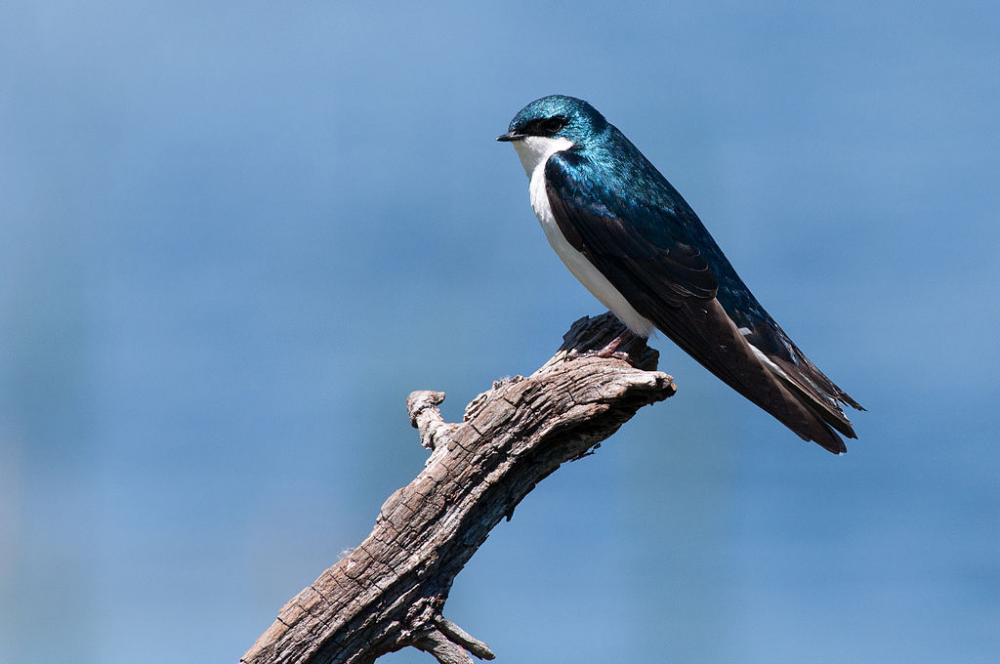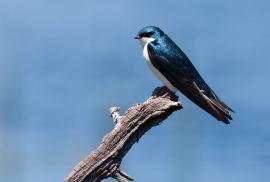Guide to Boreal Birds
Overview
This bird's habit of feeding on bayberries enables it to winter farther north than other swallows. It is the first of our swallows to reappear in the spring. Hole-nesters such as the Tree Swallow often face a housing shortage and must fight to get into, or keep, woodpecker holes or other sought-after nest sites. Man-made breeding boxes may help increase the numbers of these birds. The Tree Swallow almost invariably nests in the immediate vicinity of water. Several pairs once nested on a ferry boat that shuttled across the Saint Lawrence River, foraging on both the American and Canadian sides. Tree Swallows often enjoy playing with a feather, which they drop and then retrieve as it floats in the air. They gather in enormous flocks along the coast in fall, where they circle in big eddies like leaves caught in a whirlwind.
Description
5-6 1/4"(13-16 cm). Sparrow-sized. Metallic blue or blue-green above and clear white below. Young birds are dull brown above but may be distinguished from Bank and Northern Rough-winged swallows by their clearer white underparts. See Violet-green Swallow.
Voice
Cheerful series of liquid twitters.
Nesting
4-6 white eggs in a feather-lined cup of grass placed in a hole in a tree or in a nest box.
Habitat
Lakeshores, flooded meadows, marshes, and streams.
Range/Migration
Breeds from Alaska east through northern Manitoba to Newfoundland and south to California, Colorado, Nebraska, and Maryland. Winters north to southern California, Gulf Coast, and Carolinas; occasionally farther.



